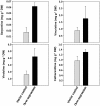CrMPK3, a mitogen activated protein kinase from Catharanthus roseus and its possible role in stress induced biosynthesis of monoterpenoid indole alkaloids
- PMID: 22871174
- PMCID: PMC3487899
- DOI: 10.1186/1471-2229-12-134
CrMPK3, a mitogen activated protein kinase from Catharanthus roseus and its possible role in stress induced biosynthesis of monoterpenoid indole alkaloids
Abstract
Background: Mitogen activated protein kinase (MAPK) cascade is an important signaling cascade that operates in stress signal transduction in plants. The biologically active monoterpenoid indole alkaloids (MIA) produced in Catharanthus roseus are known to be induced under several abiotic stress conditions such as wounding, UV-B etc. However involvement of any signaling component in the accumulation of MIAs remains poorly investigated so far. Here we report isolation of a novel abiotic stress inducible Catharanthus roseus MAPK, CrMPK3 that may have role in accumulation of MIAs in response to abiotic stress.
Results: CrMPK3 expressed in bacterial system is an active kinase as it showed auto-phosphorylation and phosphorylation of Myelin Basic Protein. CrMPK3 though localized in cytoplasm, moves to nucleus upon wounding. Wounding, UV treatment and MeJA application on C. roseus leaves resulted in the transcript accumulation of CrMPK3 as well as activation of MAPK in C. roseus leaves. Immuno-precipitation followed by immunoblot analysis revealed that wounding, UV treatment and methyl jasmonate (MeJA) activate CrMPK3. Transient over-expression of CrMPK3 in C. roseus leaf tissue showed enhanced expression of key MIA biosynthesis pathway genes and also accumulation of specific MIAs.
Conclusion: Results from our study suggest a possible involvement of CrMPK3 in abiotic stress signal transduction towards regulation of transcripts of key MIA biosynthetic pathway genes, regulators and accumulation of major MIAs.
Figures







References
-
- El-Sayed M, Verpoorte R. Catharanthus terpenoid indole alkaloids: biosynthesis and regulation. Phytochem Rev. 2007;6:277–305. doi: 10.1007/s11101-006-9047-8. - DOI
-
- Aerts R, Gisi D, De Carolis E, De Luca V, Baumann TW. Methyl jasmonate vapor increases the developmentally controlled synthesis of alkaloids in Catharanthus and Cinchona seedlings. Plant J. 1994;5:635–643. doi: 10.1111/j.1365-313X.1994.00635.x. - DOI
-
- Menke FLH, Stefanie P, Mueller MJ, Kijne JW, Memelink J. Involvement of the Octadecanoid pathway and protein phosphorylation in fungal elicitor induced expression of Terpenoid Indole Alkaloid biosynthetic genes in Catharanthus roseus. Plant Physiol. 1999;119:1289–1296. doi: 10.1104/pp.119.4.1289. - DOI - PMC - PubMed
-
- Thoma I, Loeffler C, Sinha AK, Gupta M, Krischke M, Steffan B, Roitsch T, Mueller MJ. Cyclopentenone isoprostanes induced by reactive oxygen species trigger defense gene activation and phytoalexin accumulation in plants. Plant J. 2003;34:363–375. doi: 10.1046/j.1365-313X.2003.01730.x. - DOI - PubMed
Publication types
MeSH terms
Substances
Associated data
- Actions
- Actions
- Actions
- Actions
- Actions
- Actions
- Actions
- Actions
- Actions
- Actions
- Actions
- Actions
LinkOut - more resources
Full Text Sources

